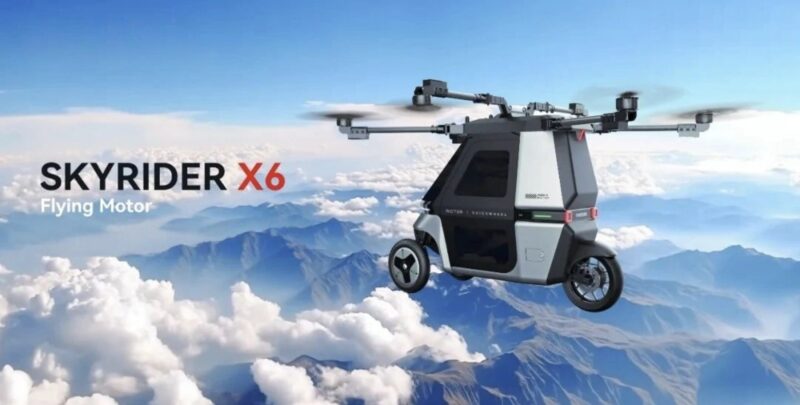Chinese tech company Kuickwheel officially unveiled the Skyrider X6, designed and developed by Rictor, a tilting three-wheeled amphibious flying motorcycle. The vehicle is now available for pre-order on JD.com, one of China’s online marketplaces, priced at 498,800 yuan (approx. 69,000 USD).
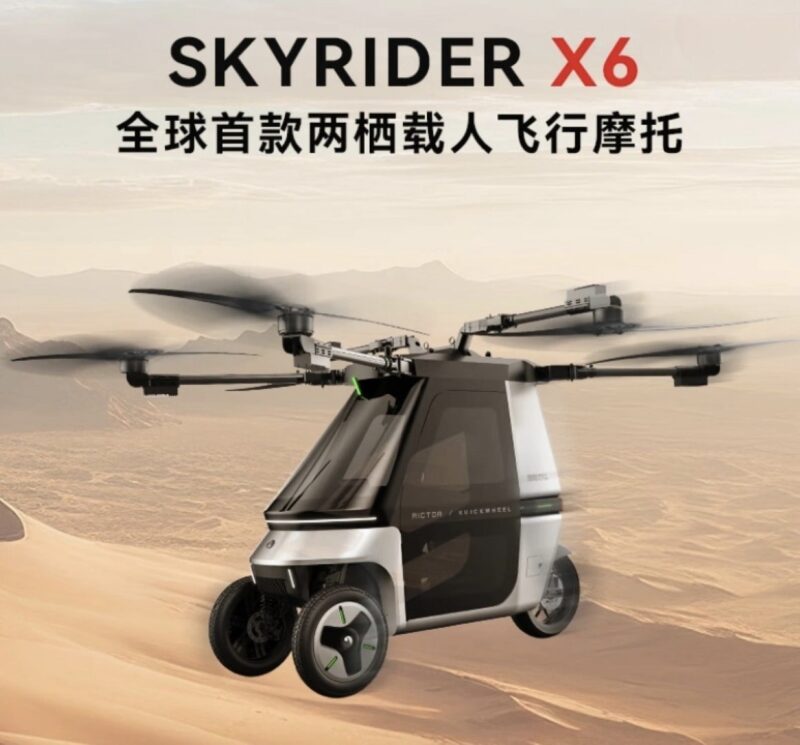
The Skyrider X6 adopts a dual-mode configuration, enabling land and aerial mobility. It is a reverse trike powered by an electric motor on the ground, offering a top speed of 70 km/h and up to 200 km range (assembly CLTC). In flight mode, it uses a 6-axis, 6-rotor electric propulsion system capable of reaching 72 km/h with a maximum flight duration of around 20 minutes. Kuickwheel suggests the vehicle could serve short-range commuting and emergency transport scenarios.

The reverse-trike layout uses a mid-mounted rear-wheel-drive system for ground stability. The body is made from carbon fibre composite and aviation-grade aluminium alloy to minimise weight. For flight, the Skyrider X6 supports automated takeoff, landing, route planning, and cruising. Manual operation via a joystick is also available for experienced users.

Safety features include redundant propulsion and control systems. The rotors are powered by independent motors that can continue operating if one fails. The flight control unit includes backup logic for stability in variable conditions. A ballistic parachute system is designed to deploy automatically during critical failures.
The vehicle’s battery is 10.5 kWh and supports standard automotive DC fast charging. Charging from empty to full takes approximately one hour.
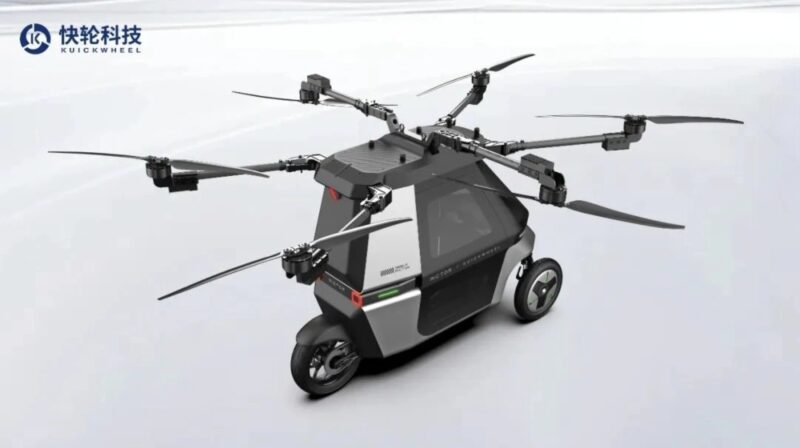
Related background: Skyrider X1
The Skyrider X1 was previously introduced at CES 2025. This earlier model features retractable wheels for ground operation and a four-axis, eight-rotor layout for vertical takeoff.
Two variants are available:
- X1 SL: 10.5 kWh semi-solid battery, 25 minutes of flight time
- X1 SX: 21 kWh battery, offering up to 40 minutes or 50 km of range
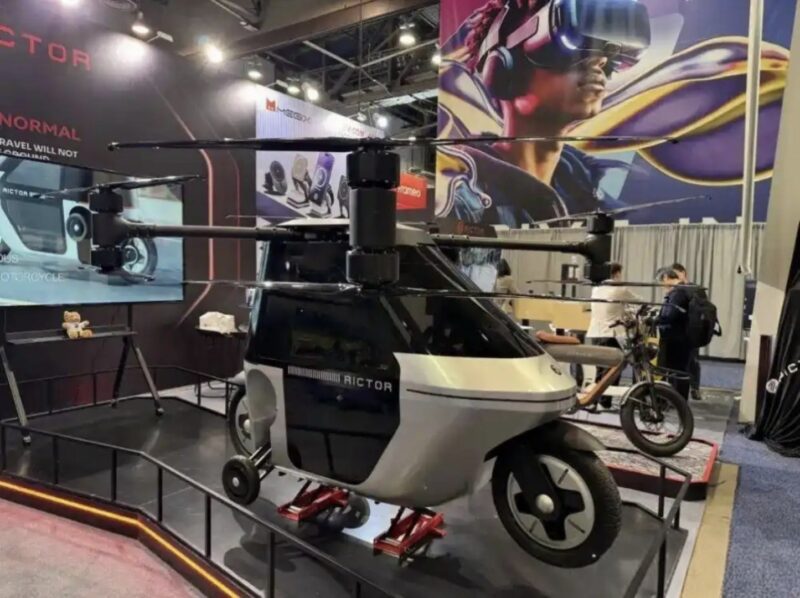
The X1 supports 50 kW DC fast charging, reaching 80% capacity in 30 minutes. Safety systems include a triple-redundant flight controller, a 0.3-second emergency parachute deployment system, and real-time battery monitoring.
According to Kuickwheel’s estimates, aerial commuting can significantly reduce travel time. For instance, a trip from Pudong to Puxi in Shanghai that takes 90 minutes by car could be shortened to 15 minutes by air.
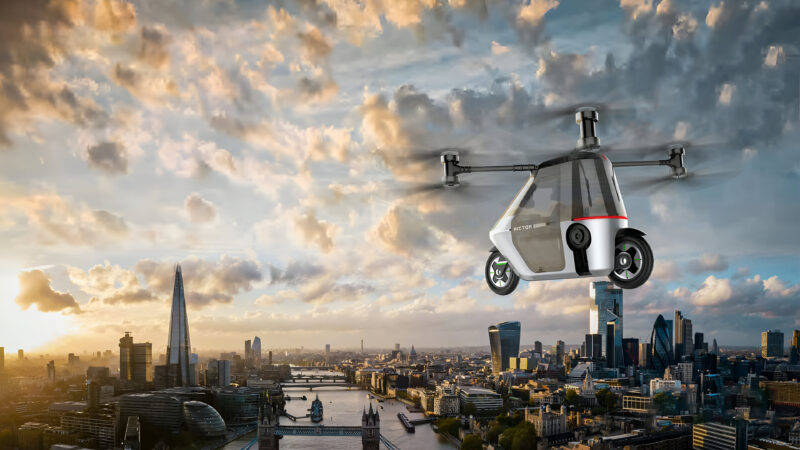
Operating costs are estimated at 3 yuan (approx. 0.41 USD) per km in flight mode, with annual maintenance expected to range from 20,000 to 30,000 yuan (approx. 2,800 – 4,200 USD).
Airspace regulations remain a significant challenge. In China, civilian low-altitude airspace under 200 meters is not yet legal. Additionally, flying the Skyrider requires a light sport aircraft license, which involves a training investment of about 50,000 yuan (approx. 6,900 USD). Its main rival in China is the XPeng AeroHT’s flying car, which is priced at approximately 1.2 million yuan (approximately 166,000 USD).
No related articles available.
Follow us for ev updates



